- Home
- New Kyurizukai
- Atmospheric & Environmental Chemistry
from Keio's Faculty of Science and Technology
Atmospheric & Environmental Chemistry
from Keio's Faculty of Science and Technology
A new perspective for study of
atmospheric & environmental chemistry
In studies, basketball and piano . . . my power for persistent, unwavering continuation has produced achievements.
Dr. Okuda took up playing the piano and basketball as pursuits under the influence of his elder brother and sister. Although he took up neither pursuits on his own will, he was able to experience joys that could be appreciated only through continually engaging in them. The power to persistently continue pursuits was nurtured through piano and basketball. This combined with the power to look at things objectively – a capacity developed through constant changes in his environment – led to his worthy achievements.
Tomoaki Okuda
Dr. Okuda specializes in environmental chemistry, atmospheric chemistry and aerosol engineering. He pursues research work by developing new-concept methods of his own to shed light on harmful physico-chemical properties of atmospheric aerosols relative to living bodies. He graduated from the Department of Chemistry, Faculty of Science, of Tokyo Metropolitan University in 1997, and then completed the master’s course. In 2002, he obtained a doctor’s degree (Dr. Agr.) at the United Graduate School of Agricultural Science, Tokyo University of Agriculture and Technology. The same year saw him become a research associate at Keio University Department of Applied Chemistry, Faculty of Science and Technology, and assistant professor in 2007. From 2007 to 2008, he served as visiting lecturer at University of Wisconsin-Madison. In 2015, he was promoted to the current position as associate professor of Keio University Department of Applied Chemistry, Faculty of Science and Technology. Among the awards he received is the Asian Young Aerosol Scientist Award (June 2015).
The Research
Associate Professor Tomoaki Okuda is featured in this issue, whose field of research focuses on collection technology for and physico-chemical properties of airborne particulate matter.
Scientific approach to elucidating the atmospheric environment and its health effects
Making the most of the latest methods and new perspectives to get to the bottom of PM2.5
PM2.5, a particulate matter 2.5μm or less in diameter, is an issue of growing concern of late due to its potential threat to health. Associate Professor Tomoaki Okuda of the Department of Applied Chemistry strives to establish a collection technology for PM2.5 and larger particles while also shedding light on their physico-chemical properties such as surface area concentrations and electrostatic characteristics. Instead of being stuck in preconceived ideas, he boldly employs the latest methods to investigate into unknown properties of substances and elucidate what the atmospheric environment really is – endeavors for the promotion of people’s health.
Collecting PM2.5 by means of cyclone system
PM2.5 concentration in the atmosphere over China showed a sudden rise in 2013, the negative impact of which was feared to cause a serious social concern in Japan. While the problem of air pollution itself dates back as early as the 19th century, it was much later – in the 1970s onward – that particulate matter 2.5μm or less in diameter came to the fore as a likely culprit of serious threat to health.
Smaller particles mean that pollutants not only enter the nasal cavity and trachea but can also reach as deep as alveolus in the lung, thus causing respiratory and/ or cardiovascular diseases, which is said to be the real problem. To address this problem, the United States established its environmental standards in 1997 and Japan in 2009.
The ensuing years have seen a number of countries move forward with research efforts on PM2.5 and take countermeasures. As a research scientist, Dr. Okuda is engaged in studies of PM2.5 collection technology and its physicochemical properties.
“Why did I begin with the collection technology? Because I thought it would be impossible to elucidate the true impact of PM2.5 on the human body unless we conducted experiments on substances actually collected from the atmosphere. This is why I began my research by collecting a lot of particulate matter in the air.”
In the past, filtering systems were the main technology used to collect PM2.5 in the atmosphere. What Dr. Okuda adopted was a cyclone system based on centrifugal force. To tell the truth, until recently the cyclone system has been regarded as inappropriate for collecting ultrafine particulate matter.
“As it is used, a filter gets clogged. Moreover, some substances stuck to the filter cannot be taken out. So I dared to choose a cyclone system instead. In the past, cyclones were used mostly for collecting large-diameter particles; in fact, there were very few papers that mentioned the use of a cyclone for collecting PM2.5 . Once I tried the cyclone system, however, I could collect most of PM2.5 . Even today, most cyclone specialists won’t believe this very fact,” Dr. Okuda added laughingly.
In the first place, airborne particulate matter is something that contains, along with PM2.5 , large particles slightly less than 10μm in diameter, such as pollen that adversely affects the nose and throat. So Dr. Okuda exhibited ingenuity to modify the air passage designed to draw in the air at a rate of 1,200 liters per minute. What he did was the creation of what is known as a “virtual impactor” designed to create separate airflow channels with different airflow speeds, which in turn allows two cyclones installed downstream to sort and collect large and small particles simultaneously.
“This development enjoyed unexpectedly great response from interested users so much so that devices modelled after my creation are being installed here and there,” he proudly remarked.
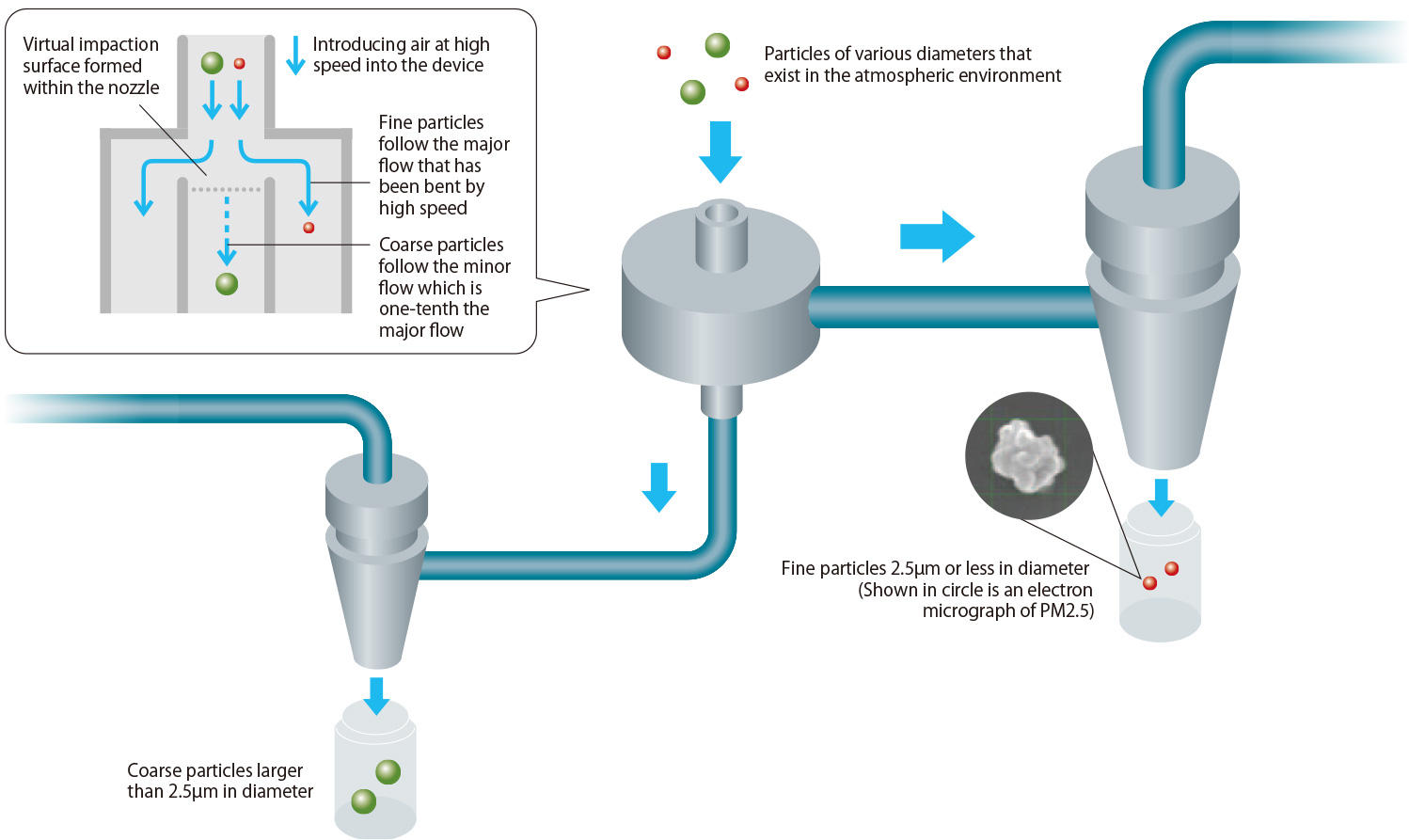
Fig. 1 Schematic view of a large-flow, simultaneous PM2.5 and coarse particle sampler
This is a large-flow, simultaneous PM2.5 and coarse particle collector, using a virtual impactor and cyclones for particle classification. In terms of component composition, about half of a PM2.5 is a water-soluble inorganic substance, the remainder consisting of soot (diesel exhaust particles, etc.) and organic compounds. There are cases in which a substance, which is originally a gas, turns into particles as a result of chemical reactions occurring in the atmosphere. These cases are viewed as problematic because conventional regulations are often unable to deal with them. Meanwhile, pollen and dust are classified into coarse particles. For example, there is a possibility that yellow sand particles, which have adsorbed pollutants, fly over to Japan. We can expect to apply the technique of collecting PM2.5 and coarse particles – simultaneously and in large quantities – to cell exposure experiments and various other fields of research.
Measuring surface area concentration in real-time
Another research theme of Dr. Okuda is real-time measurement of surface area concentration of particulate matter. “Over the years, the main interest of PM2.5 research scientists had been in shedding light on its chemical component composition. Not to be missed here is the fact that the impact of a given substance on living bodies varies according to the state of matter. For example, most PM2.5 particles exist as an aggregate of fine particles stuck to each other. The surface of this aggregate is rough and uneven. As such, it has a surface area larger than that of a spherical body, which is known to have adverse effects on living bodies.” In a particle exposure experiment using a carbon nanotube and mice, it was confirmed that inflammation of the mice’s respiratory tract tissue was promoted as the particle surface area became larger. It was also known that in proportion to surface area, particles were liable to adsorb pollutants in the atmosphere onto their surface. This led Dr. Okuda to use equipment designed to measure the surface area concentration in realtime. Based on the “diffusion charging method,” this equipment allows a sample to pass through an ion-generating chamber, charges particles and measures the current value downstream. He has been collecting data in this manner since 2013. “From March 2015 on, we are collaborating with Fukuoka University, the National Institute of Advanced Industrial Science and Technology and the National Institute for Environmental Studies, measuring in real-time more chemical component concentrations and particle surface areas and observing differences in terms of time series. Although the current environmental standards require us to determine mass concentration only, sooner or later surface area concentration may be added as a new metric.”
Examining the charge state of fine particles
Recent studies reveal that when particles are inhaled into a living body, particle deposition amount increases in proportion to the particles’ number of charges. “In an experiment using a human respiratory tract replica, it became clear that charged particles were sticking to the respiratory tract about six times more than non-charged ones. This interprets that the concentration of harmful substances in the atmosphere is six times higher, doesn’t it? However, there are virtually no researchers who have noticed this fact.” So Dr. Okuda is also engaged in realtime measurement of charged-state particles by means of the “electrical mobility method” which allows particles to pass between electrode plates and uses a particle counter to determine the number of particles downstream where the air stream passage is branched off. “What’s intriguing to me is that the balance between positively- and negatively-charged particles changes frequently. Since influences of cosmic rays alone cannot explain this drastic change, there must be one or more other causes, such as exhaust gas and highvoltage power cables. But virtually no studies about this phenomenon have been made to date. Naturally, I’ve had to make necessary devices all on my own. Given this is an uncharted territory of research, it’s all the more challenging and rewarding.” A seemingly known world can be a vast untapped world the moment you get rid of your stereotypes. We would like to expect Dr. Okuda’s unique perspective and approach to produce more and more creative research results.
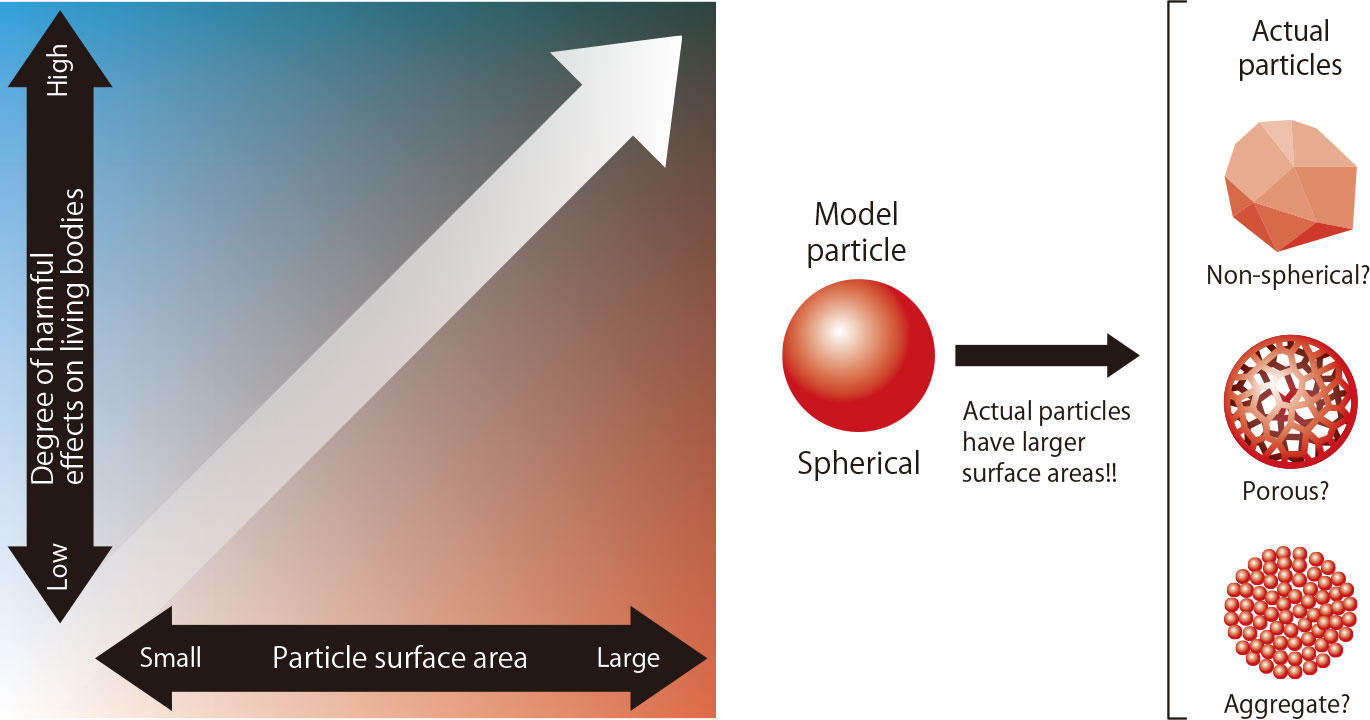
Fig. 2 How the surface area of particulate matter affects living bodies?
Even substances of identical chemical component composition can affect living bodies in different ways if their surface areas differ. As the surface area becomes larger, there is a possibility of its hazard to living bodies getting greater due to chemical reactions taking place on the particle surface and/or promotion of pollutant adsorption. In the actual atmosphere, particles are not spherical. When it comes to non-spherical particles or an aggregate of fine particles stuck to each other, their surface areas increase, but virtually no measurement has been made to date.
Interview
Associate Professor Tomoaki Okuda
Watching my father's behavior as an example, I aimed to become a university teacher
What was your childhood like?
I was born in Fussa City of Tokyo as the youngest child of three – a brother seven years older and a sister five years older than me. Under the influence of my brother and sister, I began to take lessons on the piano at the age of four and continued the pursuit until 27 years of age when I found employment. Since both my brother and sister had been playing the piano since childhood, I took playing the piano for granted. It was only after entering an elementary school that I found to my surprise that many of my schoolmates do not play the piano. It’s no exaggeration (Laughter)! Aside from piano, I often enjoyed playing mah-jongg with my family members.
After having served as a high school teacher, my father became a university teacher, teaching sociology of education at the faculty of literature of a private university. In his daily life he made it a rule to come back home at 6:00 p.m. He often invited his students for a reading circle or drinking party; he looked really happy.
Watching my father’s behavior as an example, I came to make up my mind to become a university teacher at some time. In reality, the lifestyle as a science/engineering course faculty member is much different from that of a humanities course. Contrary to my initial expectations, I’m now leading an extremely busy life. I wish I could notice this difference before it’s too late (Laughter). My home is close to my campus, so I make it a rule to go back home once to have supper with my family and then return to the campus to work further.
Let me ask you about your school studies.
My parents told me to study mathematics and Japanese closely because both subjects are fundamental. However, I don’t remember them forcing me to study too hard. If I remember correctly, I had little difficulty in school studies from elementary through junior high school years. I was admitted to the Tokyo Metropolitan Tachikawa High School. Soon after that I decided to choose the science and engineering course. That said, chemistry was the only favorite scientific subject; physics was totally hard to deal with. I was good at handling statistical data. When playing baseball with friends, for example, I kept complete records of my teammates’ batting averages and batting order beforehand and used the data to map out a plan to defeat the opposing team (Laughter).
When I was a junior in high school, I began to think about what I should do in the future. I wanted to do something useful for people, such as solving environmental problems. So I was inclined to choose the industrial chemistry course at a college. It was when Mr. Ohmachi, my chemistry teacher, advised me, saying “If you want to advance to the applied chemistry course, you should seriously study the basics at your college.” Accepting his kind advice, I entered the Department of Chemistry, Faculty of Science, of Tokyo Metropolitan University.
Incidentally, as a high school junior I didn’t consult my parents at all about what course and what college to choose because both were staying in the U.K. for one year due to my father’s research requirement. By that time my elder brother was already independent as a full-fledged member of society. I was living with my elder sister who was then just in the first year as a full-fledged member of society. I owe much to my sister who took good care of me with everything.
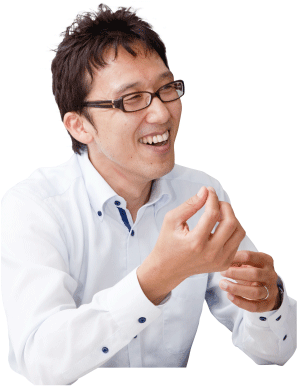
Upon entering the university, I belonged to the basketball team. Basketball was a pursuit I had engaged in from junior high through senior high school. Day after day of hard practice made me so exhausted that I somehow attended classes but was always sleeping at the front row of the classroom. Thinking back on those days, I’m terribly sorry for my teachers. As a teacher myself now, therefore, I’m trying to make my classwork as interesting as possible to prevent my students from getting sleepy. To tell the truth, I took up basketball also thanks to the influences of my brother and sister. My true interest was in baseball, but I chose basketball after all. Whether playing the piano or basketball, I didn’t choose them on my own will. But it was by the power of my will that I have continued the pursuits for years to date, of which I’m a bit proud. As a member of an adult team, I’m still continuing this sport at a pace of once a week, mainly on Sundays. I also have an experience of teaming up with students of the Department of Applied Chemistry and winning the Keio Gijuku Presidential Cup in a Keio-wide basketball tournament. Although I least expected I would continue basketball up to this age, it’s true that I become prone to break down my health unless exercising on a regular basis. So I’d like to continue this sport in the years ahead. As for piano, up until 27 years of age I had performed in a piano concert three times a year. More than once I had become inclined to give up piano, but it became increasingly difficult to give up. It was partly because the number of male pianists was very limited and partly because by that time I had become more or less an object of admiration among small boys and wanted to meet their expectations (Laughter). Later I joined a jazz band and fusion band, where I was responsible for the keyboard part. I continued these activities up to the age of 32 before leaving Japan to study in the United States. Our original band even released two CDs from an indie label. Furthermore, I performed several times on live house stages and on the occasion of our Yagami Campus Festival. Due to my extremely busy work schedule, I’m now suspending these musical activities. Influences of my brother and sister are extending to my research activities. My elder brother is an X-ray system engineer working for an analytical equipment manufacturer. As such, he once offered a suggestion for my studies. Instead of the conventional acid decomposition/ICP-MS system, I successfully developed an analytical method based on “energy-dispersive X-ray fluorescence (EDXRF) spectroscopy.” This is a multi-element simultaneous X-ray spectrometry system to analyze metallic constituents in PM2.5, which enables accurate analysis easily and quickly. He suggested the use of this system in my research. Due to its relatively low sensitivity, this system had been deemed inappropriate for microanalysis until then. To overcome this drawback, I exerted my ingenuity for improvements. The resultant system was found well capable of dealing with 15-or-so elements, exhibiting the efficiency of analyzing one sample in approximately 15 minutes. Thanks to this research achievement, I was honored with the “Research Paper Award 2014” from the Japan Association of Aerosol Science and Technology and the “Technological Development Award” which is the 4th Steel Foundation for Environmental Protection Technology Award for grant-in-aid research results. I’m grateful to my brother because about half of these achievements are credited with him. Due to these circumstances, I was invited to my brother’s company to deliver a lecture. It was totally unthinkable that my brother and I would have a work-related link – a curious coincidence indeed.
A basketball-dedicated lifestyle and into a researcher's career
About when did you put research work into full gear?
As a senior I belonged to a lab specializing in environmental and analytical chemistry. But I was an active member of the basketball club up to October the same year. So it was only after I advanced to the master’s course that I got down to research work seriously.
However, the theme was not atmospheric research. I began by analyzing pollutants taken from deposits on a lake bottom. By boring cores (cylindrical samples of sediments) and examining them, it was possible to follow changes in contamination in time series. I actually went to a lake at the foot of Mt. Akagi, where I used a rowboat to collect cores.
But I gradually found myself somewhat unsatisfied with merely analyzing contamination that took place in the past. I wish to really contribute to the health of people – this enthusiasm urged me to investigate into what’s going on NOW. Because of this motivation, I also took up research into the atmosphere when I was in the second year of the master’s course.
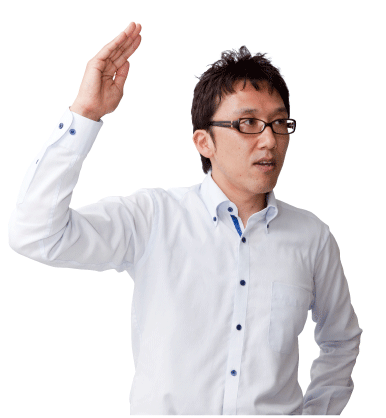
Since I was aiming to become a university teacher, I advanced to the doctor’s course instead of looking for private employment. It was just about then that my advising teacher was retiring, so for my doctor’s course I chose Tokyo University of Agriculture and Technology (TUAT). That said, most of the vitally needed measuring instruments were available only at Tokyo Metropolitan University (TMU). Therefore, I had to shuttle between TUAT and TMU frequently. The target research theme during my doctor’s course was harmful compounds found in the soil and atmosphere, which consist of benzene ring (a hexagonal ring arrangement consisting of six carbon atoms). I worked to identify their sources and pathways, among others. While organic compounds mainly contain carbon-12 and carbon-13, the ratio between these isotopes varies depending on sources. For example, automobile exhaust contains slightly more carbon-13 whereas burning of wood produces slightly more carbon-12. So I identified their sources by measuring the ratio between carbon-12 and carbon-13. In those days, I often conducted field surveys.
Coming to have another look at Japan while studying in the United States
Why and how did you come to teach at Keio?
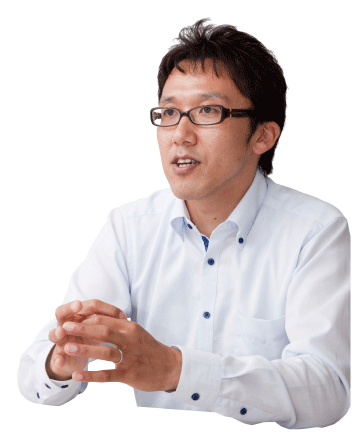
I applied for a position in response to Keio University’s public recruitment call in 2001 when I was in the third year of my doctor’s course. Since I had no relations whatsoever with Keio, I thought I would never be employed.
The atmosphere of Keio as a private university was very different from the schools I had studied at because the junior-high, senior-high schools and the universities I experienced as a student were all public/national schools. Students at Keio are bright learners but their range of interest and activity is wide. Looking at myself, I’ve been involved in pursuits like basketball and music. In this sense, my character agrees with the Keio culture you might say. I’m often asked, “Are you a graduate of Keio Senior High School?” It may be because some people sense in me something in common with the Keio culture (Laughter).
Then I went over to the United States to study at the University of Wisconsin-Madison from 2007 to 2008. At Wisconsin, I engaged in research relating to purification of diesel engine exhaust gas. As the very first overseas study for me, I had difficulties with English, but studying there was a truly challenging and rewarding experience. At the same time I was able to appreciate good aspects of Japan as a very livable country with highly advanced social systems. It also seems to me that Japanese students are superior when it comes to basic scholastic ability.
Regardless of being a researcher or not, I strongly suggest you to go overseas at least once in order to have another, objective look at our home country. Currently I’m serving as a member of the International Committee at Keio, strongly encouraging our students to study abroad.
What do you think are good points of Keio University?
The philosophy of the Keio founder Yukichi Fukuzawa is thoroughly shared by all teachers, administrative staff and even by senior alumni. This allows Keio as a whole to always keep the proper, desirable direction. For example, Keio has an established system to offer satisfactory support to those who study abroad. I’m especially grateful to our administrative staff for their dedicated support. Keio really has an excellent environment, where all of us can work and learn unrestrictedly and comfortably. As a person who came from outside Keio, I can see these merits clearly more than anyone else. The importance of “looking at things from different viewpoints” comes home to my heart.
Some words from students
Student : Dr. Okuda is a very earnest teacher. But when we are wrong, he is reasonable enough to criticize us. I think there are few teachers like Dr. Okuda who guide us as to how to speak and how to make presentations – considerations to ensure that we can do well when we go out into the world. On the other hand, when we are OFF, he joins us for a drinking party, enjoying sports and the like. This positive, lively atmosphere is a great asset to all of us.
(Reporter & text writer: Madoka Tainaka)


